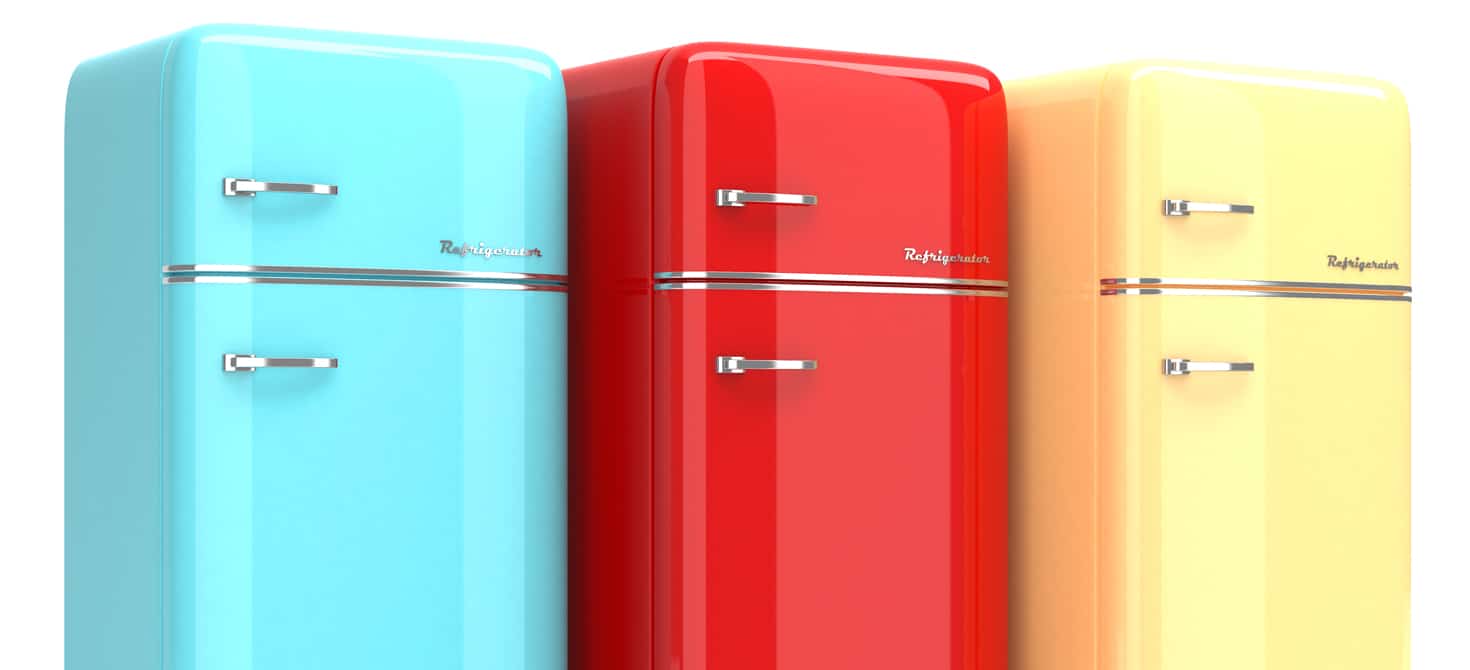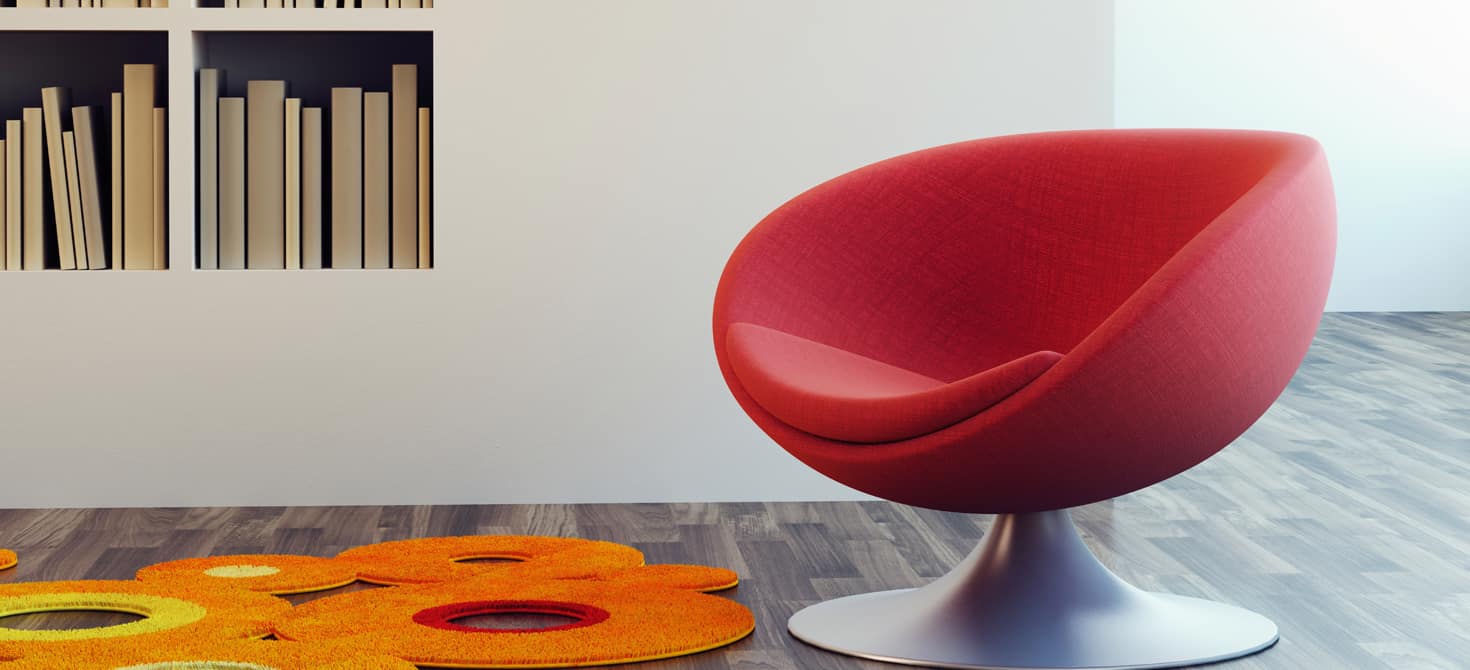- Furnishing tips
- 0 likes
- 4033 views

The 60's style furniture has never ceased to fascinate and fascinate. The fascination of the fabulous 60s is truly timeless, even in terms of furniture and interior design.
Lightness, freshness and strong colours, this is the stylistic imprint that characterized the furniture in the 50s and 60s, able to give the rooms a great carefree and cheerfulness. The American furniture of the 60s is the result of the great climate of positivity and renewal that characterized the second post-war period. In this period in the furnishing sector, experimentation with lighter and more functional languages began: this happened with the advent and use of more sinuous and essential lines, and at the same time soft and clean.
Let's go on an evocative journey to discover the furniture of the 60s and vintage.
Index
The colours of the walls in the 60s
Our journey of discovery of the typical furniture of the 60s begins with some brief hints about the use of colours and hues, typical of those years. The 60s are distinguished by a prevalence of the use of natural colours such as white and beige.
Typical of those years are also the pastel colours and strong contrasts or the patterns with particular effects and motifs: one above all the fluorescent effect, or the optical effect and the floral style.
Typical design icons of the 60s
In terms of furniture, the 60s are characterized by some stylistic icons that we could define as timeless and still very trendy today, thanks to the rediscovery of some vintage pieces still able to represent contemporary trends.
Among the main design icons of the 60s is the famous Smeg refrigerator, characterised by its typical rounded shapes and metal handle. And then there is the classic Bialetti mocha and the first food processors. Often and willingly in houses inspired by the theme of the 60s there can be no lack of graphic or sculptural references to what is probably the most traditional icon of 60s modernism: we are obviously talking about the scooter, and in particular the Vespa and Lambretta.
In many houses with a 1960s furnishing style, there is no lack of prints, plaques or pictures referring to the Vespa and Lambretta advertising posters.
The 60s are a pop explosion of colours and magic, which often have innovation and popular culture as a source of inspiration.
The 60s and Pop Art
The primary source of inspiration of the 60s in music, art and undoubtedly also in interior design is Pop Art. The advent of the latter has undoubtedly marked this decade indelibly.
Pop Art is above all a spirit of generational renewal and a symbol of modernity, both in terms of form and society. The elements of everyday life are thanks to this form of art that became part of the style of the homes of the time. It is in this way that the concept of furniture and style became dynamic and fermented in the 60s.
What we are witnessing in the 60s is an evolution of design marked by a great explosion of colour and liveliness. An indelible characteristic of the furniture of the 60s, which makes it in some ways immortal, is the perfect combination of classicism and dynamism.
Typical 60's living room
The first room in the typical house of the 60s that we want to talk about is the living room: in those years, more than ever before, it represents the heart of the house, the nerve centre where the family meets, discusses and confronts each other.
The atmosphere of a 60's living room is extremely fresh and sparkling, full of colours and dynamism, but at the same time extremely functional and comfortable. The colour of the walls of a living room typical of those years could be characterized by strong and brilliant shades. The furnishings, on the other hand, must be endowed with great personality and rigorously matched with each other, playing in a calibrated way with the chromatic contrasts.
The shapes of the furniture and furnishings are mainly rounded: it is the shape of the furniture of that period that contributes to give a general sense of comfort and functionality.
60s style kitchen
The kitchens furnished with design inspiration from the 60s are the right combination of technological innovation and tradition: this characteristic unites the interior design of the 60s with that of the previous decade (50s).
Characteristic elements of a 60s kitchen are the revisited furniture and the appliances characterized by the typical rounded and strictly multicoloured shapes. A classic example of vintage 50s and 60s furniture and appliances is the famous and timeless Smeg refrigerator, combined with decorations and furnishing elements typical of the fabulous 60s.

Another characteristic element of 60s kitchens is the typical chequered floors.
Bedrooms from the 60s
Here we are finally arrived at the bedroom furniture made with inspiration from the design of the fabulous 60s. The furnishing of a bedroom in 60's style is first of all essentiality, elegance and a touch of eccentricity and liveliness: in this furnishing context, there is a lot of space for Swedish 60's furniture.
In this case our advice is to insert in the bedroom a chair that recalls the design and style of the time. To recall the atmospheres and emotions of those years you can also decide to decorate the walls of the bedroom with paintings and prints inspired by Pop Art.
Finally, as far as the fabrics used for the beds are concerned, they should be coloured in a varied way, so as to give great freshness and dynamism to your rooms.

Further tips and tricks for a vintage 60's furniture
If you love the 60s so much to furnish your home with the style and design that characterized that era, you can only focus on some cult objects, icons of those years: in this regard you can decide to buy chairs, armchairs or even vintage sofas and drawers, or revisited furniture made according to the dictates of the style of the 60s.
The furnishing elements of the 60s are characterized by tapered shapes, which often and willingly refer to geometric elements that are enhanced by a wide use of colours and colours that can give your rooms a unique personality.
In the previous paragraphs we have mentioned the global artistic phenomenon of Pop Art. This important artistic current marked the affirmation of the great Andy Warhol: the artist was able to give life to a current capable of expressing himself in a great creativity, characterized by decidedly youthful and modern traits.
Returning to the important aspect of decorations typical of an environment inspired by the 60s, how not to mention the birth of optical art, developed globally in the following 70s and capable of giving environments a unique personality and dynamism.
